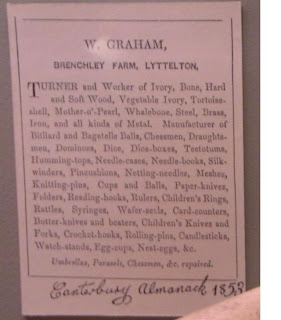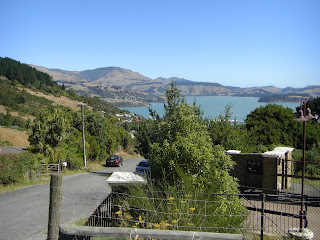This is Mt Somers, which is an extinct volcano.

The first stop was to visit the old Mt Somers schoolhouse where Frances and Don Stanton have created a wonderful garden, and also sympathetically renovated the school as a home and cottage accommodation.

By one of those 'small world' coincidences, the Stanton's are the parents of one of my colleagues from work, and my parents had already visited their garden and met them. Unfortunately Don was away on business but it was nice to meet Frances. This is Frances and Mum in front of the old schoolhouse.

Family group in the garden.

I was very impressed by the skill and hard-work which had obviously gone into creating both the garden and the decoration of the house. The overall effect was really lovely.
The next stop was the 'Birchlands' homestead a few minutes up the road at Staveley where we stayed the night. You could say that this is the 'ancestral home' of my fathers family. This farm is where my grandfathers grandfather, William Tayler Smith met Hannah Graham around 1867 after returning from the West Coast gold-fields. They married, bought land and eventually set-up their sons on farms in this area.

Birchlands has a dramatic setting on the Canterbury plains near Mt Somers and the foothills of the Southern Alps. The hills behind Mt Somers were the location used for 'Edoras' in the 'Lord of the Rings' films. This is the view from the gate at Birchlands early in the morning.
The current house was built by William and Hannah in 1902. But William never lived in it. Before it was finished he disappeared from the ship 'Zealandia' while on a trip to Auckland to buy horses. It is presumed that he was robbed of his money and thrown overboard.

Birchlands has been beautifully restored by Lorna and Alan Dent who now run a homestay business, providing accommodation to tourists. Lorna is also a descendant of William and Hannah so a distant relative of my father.

Alan is a retired sheep-farmer, and he was able to demonstrate how to round up sheep with his sheepdog. Actually Alan's sheep-dog is also retired so he was a bit out of practice - he isn't suppose to bark that much.
This is Rika's mum feeding the sheep.

The next day we visited the old Staveley school which my relatives had attended. It is now a small museum, and we could see relatives like my great-grandfather in various old school and sporting photos.

And then to 'Alford Forest' cemetery to visit the graves of Hannah Graham and her children.

This is a memorial to WT Smith on the cemetery gates. My great-aunt use to say that the blood-red colour leaking from the letters was a sign that he had been murdered.








.jpg)

















